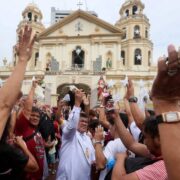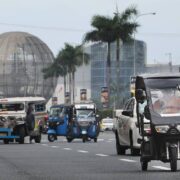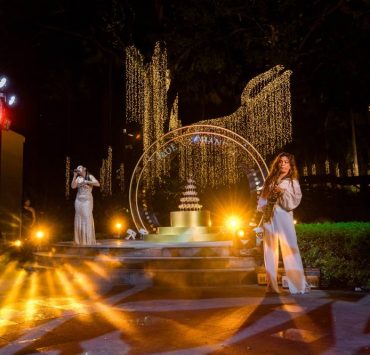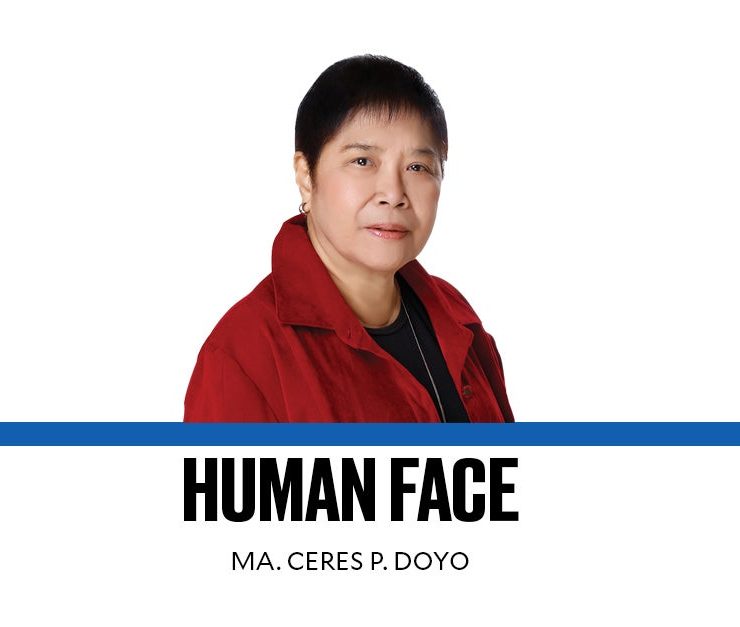Seminarian-guerrilla, teacher-reformer and ‘Marxist-Lennonist’
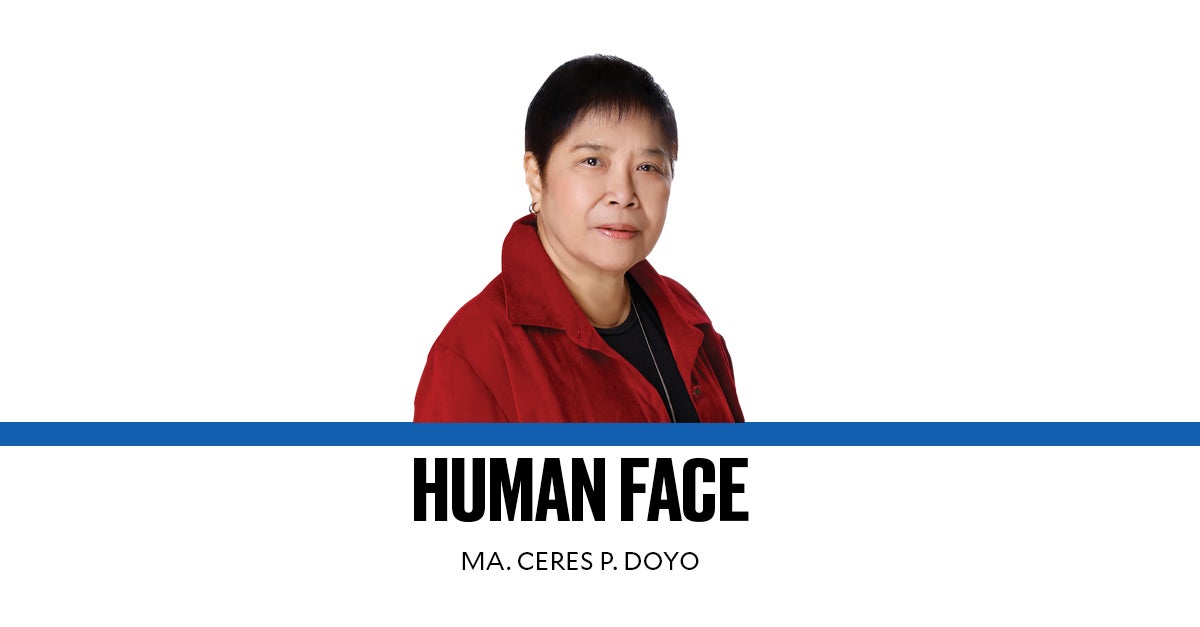
(Last of two parts) On Nov. 30, Andres Bonifacio Day, the names of six Filipinos were unveiled on the Wall of Remembrance at Bantayog ng mga Bayani (Monument for Heroes) grounds in Quezon City to honor their work in fighting for freedom.
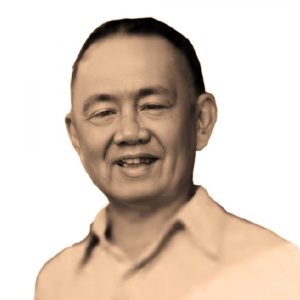
The 2023 Bantayog honorees are Manuel “Buyog” B. Sampiano, a leader of an indigenous community in Mindanao; farmers’ rights advocates Emerito N. Rodriguez and Melecio L. Marimon; human rights lawyers-writers Jesus Antonio M. Carpio and Luis C. General Jr., and well-known social activist Isagani R. Serrano.
Besides the six new Bantayog heroes honored on Thursday, three past heroes were also remembered, as has been the yearly practice. They are Julieta Cupino Armea, Filomena Asuncion and Haydee Yorac.
The Bantayog monument, commemorative wall, museum, library and mini-auditorium at Bantayog Memorial Center are dedicated to modern-day martyrs and heroes who fought tyranny and martial rule, from 1972 to 1986, under the Marcos dictatorship, in order to restore freedom, justice and democracy in the country.
‘Operation Dikit’

CONTRIBUTED PHOTO
Marimon was a college student in St. Mary’s College in Davao Oriental when he got interested in social issues. Marimon’s father was a member of the Federation of Free Farmers (FFF) so it was not surprising that his son would join Khi Rho, the FFF’s youth arm, in the Davao region.
He was among those who joined the 1972 “Calvary March” and were arrested and detained for several months.
When martial law was imposed by then President Ferdinand Marcos in 1972, Marimon left home to elude arrest. He and his fellow Khi Rho members lived and worked among farmers in Sigaboy town. He was again arrested in 1975. After his release in 1977, priests took him in to study in the seminary in Davao City.
After he left the seminary, he enrolled in Holy Cross College in Davao City. Marimon was part of the antidictatorship campaign’s “Operation Dikit” that painted slogans on walls. When he no longer felt safe in the city, Marimon returned to the guerrilla zone.
He was killed with four others during a military raid in Maco, Davao de Oro.
‘Conscience of the community’Born in 1921, General, nicknamed Luising, was a young man during World War II. He joined the US Armed Forces in the Far East and was wounded in battles against the occupying Japanese forces.
He also wrote love poems, mostly for his future wife, Maria, later published as a collection titled “Serenade to a Stoic and Other Poems” (1993).
After the war, General studied law, first at Silliman University in Dumaguete City, then finished it at the University of Nueva Caceres in Naga City, his birthplace. He taught law, political science and Philippine history in his alma mater for 29 years. He also wrote for local newspapers.General’s nationalism was inspired by Claro M. Recto. His writings made such an impact that Marcos had him arrested days after the latter imposed martial law in 1972. Detained with him in Camp Canuto was Carpio and several journalists. After a month in detention, they were released to the custody of the Naga archbishop.
Like his friend Carpio, General was also involved in Kilusang Mamamayan Para sa Tunay na Demokrasiya and the rally that ended up with several dead and many injured.
It was General’s articles in the local newspapers that earned him the title “the conscience of the community.”
He was the target of at least one assassination attempt but he was undeterred. After Marcos fled, General joined the political group Kaakbay and the Anti-Bases Coalition. He died of natural causes in 1997.
‘I’m a dreamer’
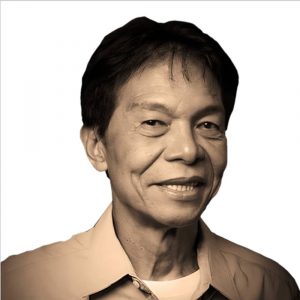
CONTRIBUTED PHOTO
Of himself Serrano had written: “I’ve been called a Marxist-Lennonist,” referring to communist theorist Karl Marx and The Beatles’ John Lennon. He found parallelisms between the communist anthem “Internationale” and Lennon’s hit song “Imagine.” Both, he thought, expressed the hope for a world that promotes fairness and sharing.Serrano, popularly known as Gani, was a compleat social activist, if there was one, a tireless development worker who sought ways to make real what he imagined. “Maybe because I’m a dreamer of more equality and fairness in this violent and fragile world, imagining no possessions, greed or hunger, and all the people sharing all the world.”
Detained twice during the Marcos dictatorship, Serrano did not cease to be a dreamer. He was arrested for the first time in 1973 and detained in Camp Crame where he was beaten so badly it took two weeks for his wounds to heal. Visiting nuns and a bishop were not allowed to see him. He was later transferred to Fort Bonifacio from where he was released in 1975.
His crime? Organizing communities in Metro Manila instead of finishing his master’s degree. He had trained in community organizing under the Philippine Ecumenical Committee on Community Organization and had been an activist since 1967, his political awareness heightened by the US war in Vietnam. He joined the left-leaning Kabataang Makabayan and Demokratikong Kabataan.Testing the limits
Having graduated from the University of the East with a bachelor of science degree in Education, cum laude, Serrano was a teacher but outside the classroom. He proposed innovative approaches in teaching and organizing. From his efforts grew organizations, of farmers among them, that tested the limits of dictatorial rule. He even served as adviser to bishops. His 1982 “Countryside Report” exposed fallacies espoused by the Marcos regime about farmers’ emancipation.
The 1982 big crackdown on leaders of the mass movements saw Serrano among those arrested and detained in Camp Crame, where he was kept for four years. While behind bars, he led fellow detainees to demand better prison conditions and the release of pregnant detainees and those who suffered from mental disorders because of trauma.Shortly after Corazon Aquino became president in 1986, she ordered the release of political prisoners, Serrano among them. In the postdictatorship period, Serrano pushed for genuine land reform by cofounding the Congress for People’s Agrarian Reform and joining the Philippine Rural Reconstruction Movement of which he became president.
His advocacy included the environment, poverty alleviation, land reform, sustainable agriculture and climate-resilient development. He developed broad national and international networks that targeted poverty. He authored several books and articles on sociopolitical issues.
Serrano died in 2019 of a lung disease. His impact on civil society was remarkable, as attested by those who had worked with him. INQ










